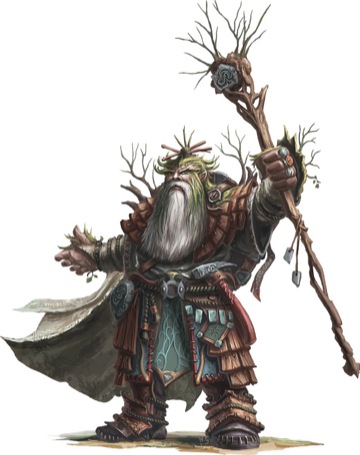You've asked, so we've answered! Last August, we released seven Class Decks for the Pathfinder Adventure Card Game. These decks provide new characters and boons that can be added to any PACG Adventure Path, and they're your gateway to the Pathfinder Society Adventure Card Guild Organized Play program. You've made it clear that you want more, and we're happy to oblige.
This August, we'll begin new monthly Class Deck releases, starting with the paladin in August, the monk in September, and the druid in October. After we complete the 11 core classes with the barbarian in November, we'll begin exploring classes outside the Pathfinder Roleplaying Game Core Rulebook. As with the previous Class Decks, each deck contains 109 cards, including boons that can take your character from the start to the end of any Adventure Path. Meet Maznar, a character from the upcoming Druid Class Deck:
Maznar is part of a small sect of dwarf druids revered by his people and by many inhabitants of wild places. He follows the Green Faith, a philosophy that commands respect for nature. Maznar draws on the power of his spells and his animal friends to protect himself and his party.
There's one big difference between the previous seven Class Decks and the new one. After hearing a lot of feedback, we decided to focus each new deck on three characters instead of four. This allows us to add more support for each character and her roles throughout her entire progression while continuing to bring you innovative character designs. Pre-order the Paladin Class Deck today!
Adventure Card Game Team at Portland's GameStorm This Weekend
The card game design team will be at GameStorm in Vancouver, WA this weekend, testing various goodies. Come find us in the Game Lab at the Vancouver Hilton!
Until next week, Pathfinders!
Tanis O'Connor
Adventure Card Game Designer

